Advancing the Future: GFRP Composites See Rising Demand Across Infrastructure and Renewable Sectors in 2025
2025-07-02
In 2025, the global demand for Glass Fiber Reinforced Polymer (GFRP) continues to gain momentum as industries increasingly turn to advanced composite materials to meet sustainability goals and performance requirements. According to recent industry reports, GFRP's market size is expected to exceed USD 6.5 billion by the end of this year, driven by its superior strength-to-weight ratio, corrosion resistance, and long service life.
One of the most notable trends is the growing adoption of GFRP in infrastructure applications, particularly in bridge decks, pedestrian walkways, retaining walls, and utility structures. Unlike traditional materials like steel or concrete, GFRP does not rust, making it highly suitable for coastal and chemically aggressive environments. Governments and civil engineering firms are now specifying GFRP components in public works projects to reduce long-term maintenance costs.
In the renewable energy sector, GFRP is playing a key role in the design of solar mounting structures, offshore wind components, and lightweight support frames. Its non-conductive and UV-resistant properties make it ideal for harsh outdoor environments where electrical insulation and durability are crucial.
Another critical development is the increased use of customized pultrusion profiles to meet specific engineering requirements. With advancements in resin systems and fiber architecture, GFRP manufacturers are offering tailored solutions with enhanced mechanical, thermal, and fire-resistant properties—pushing the boundaries of where composites can be applied.
Sustainability is also driving the market forward. GFRP materials significantly reduce environmental impact by extending service life and lowering the carbon footprint compared to metal-based alternatives. Several manufacturers have begun to integrate recycled glass fibers and bio-based resins into their production processes, aligning with global environmental standards.
As demand continues to rise, companies across the supply chain — from raw material suppliers to pultrusion experts — are investing in automation, digital quality control systems, and new product certifications to meet international standards such as ASTM, EN, and ISO.
The GFRP industry is no longer a niche — it is a critical enabler of future-ready infrastructure and sustainable engineering. Stakeholders who invest early in innovation, material performance, and global partnerships are poised to lead this transformation.





